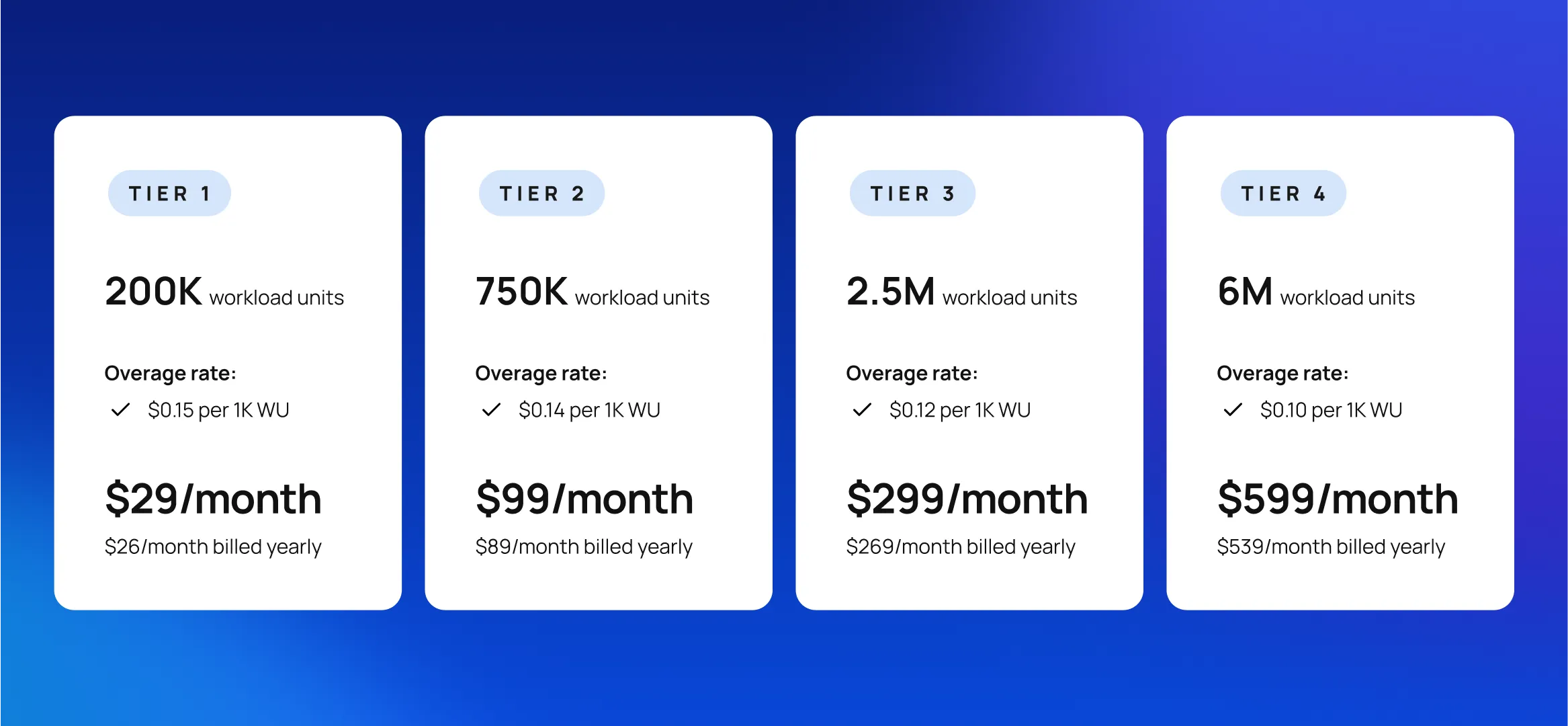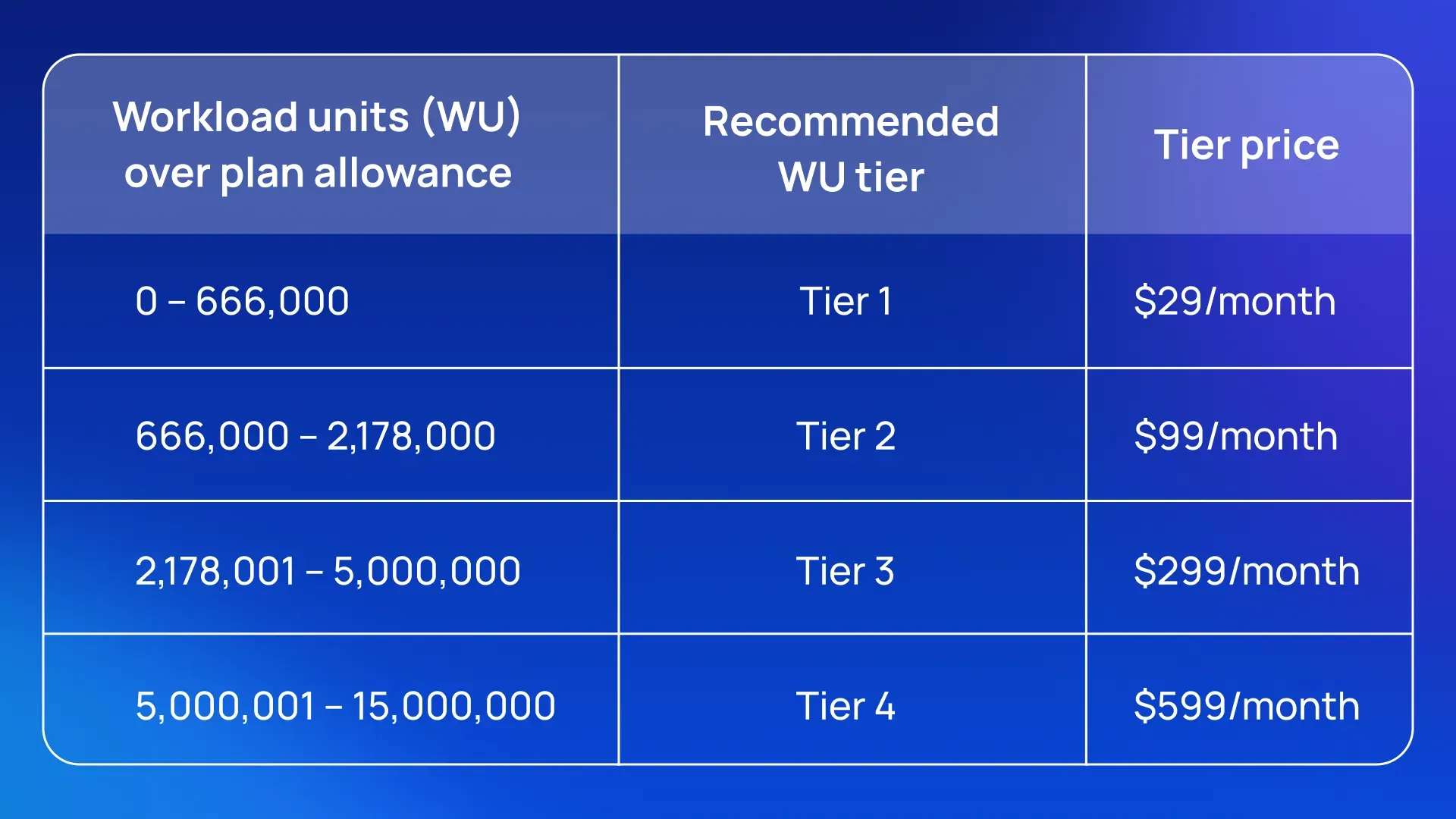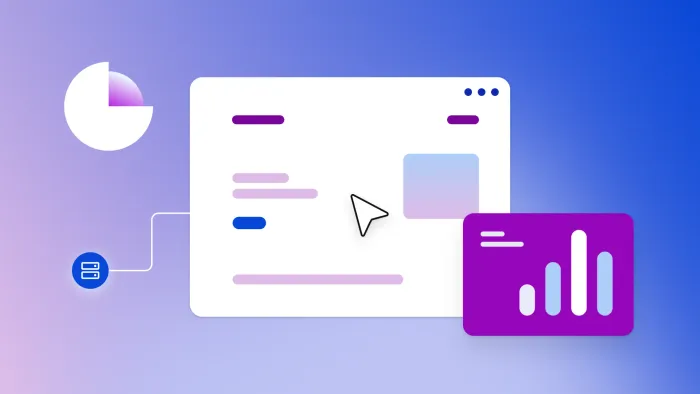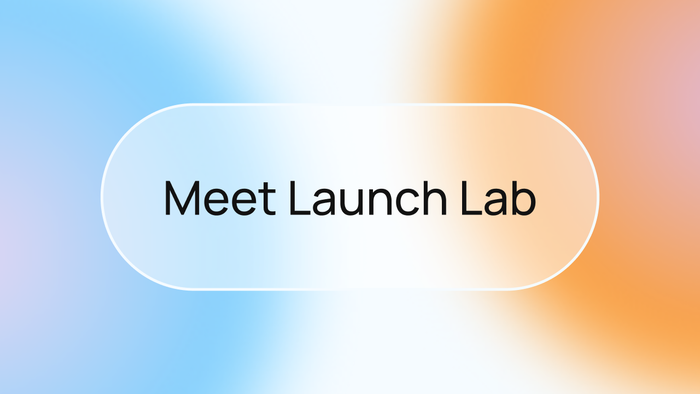In this post, you’ll find more context and answers to common questions about workload, the usage-based metric that’s linked to our pricing plans. This will help you decide which plan is right for you.
What is workload?
Workload is a metric that represents the server resources needed to host, run, and scale apps built on Bubble. In other words, it’s Bubble’s way of quantifying all the underlying server activities your app does as it runs.
Workload is measured in workload units (WU) on a monthly basis, and it captures a variety of activities that Bubble apps perform, including database operations, workflows, and web interactions. You can find the full list of workload inputs in the Bubble Manual.
As your app and users grow, so does its WU consumption. Most users find that plans come with enough workload to develop and deploy their app with live users. To help you scale, we offer several ways to add more.
What if I need more workload?
If you need to scale up beyond the workload included in your plan, there are flexible ways to add more. You can either subscribe to discounted workload add-ons, rely on pay-as-you-go overages, or choose to cap your total spend.
Workload is calculated per app, as opposed to per Bubble account.
Workload add-ons
Workload add-ons are “packages” of workload units (WU) that you can add to your existing Starter, Growth, or Team plan. They come with a fixed number of WUs at a discounted rate, and as such are the most low-cost way of adding workload units to your app.
If you do need more, you have the option to subscribe to an additional workload add-on if your app is on the Starter, Growth, or Team plan. Workload tiers offer a discounted overage rate, compared to the default overage rate.

Overages
Overages provide a flexible way to add WUs to your plan if your app exceeds its allotted units. Although you pay a slightly higher price per WU compared to workload add-ons, this option is useful while you’re scaling and unsure of your app’s exact WU needs. Enabling overages also ensures that your app remains online, even if you exhaust the WUs included in your plan.
Workload cap
To avoid paying for overages, you can disable them in your app plan settings. This helps maintain absolute control over your costs, but note that your app will go offline if it exhausts its included WU and any additional workload add-ons you’ve purchased.
Regardless of whether you disable overages, Bubble will notify you as your app approaches its workload limit, giving you time to make a decision. You can also set up custom notifications to alert you when WU consumption reaches a threshold of your choice.
How much workload will I need?
If you’re new to Bubble, the best way to assess how much workload you’ll need is to get started on the Free plan or take advantage of a free trial of our Starter plan. From your app, you’ll be able to see your workload usage over time, access real-time reporting, and drill into the different activities driving its usage. Check out our interactive walk-through of the app metrics dashboard to learn more.
Every app is different and can vary significantly in its WU needs. Sometimes, this is due to poor optimization or unnecessary processes, while other times it’s simply the nature of the app.
Typically, apps that run frequent database operations (both reading and writing) are more WU-intensive, while those that rely more on fixed data use less. For example, a dashboard aggregating lots of data on every page load will be more WU-intensive than an “about” page that doesn’t perform a single database query. You can read more about the difference between server-side and client-side processes (which don’t incur WU) in the manual.
As that example illustrates, the point isn’t that you shouldn’t ever set up a dashboard, but that how often you communicate with the database affects your total WU consumption. This knowledge helps you balance your app’s user experience and features against the WU needed to make that magic happen. In many cases, providing your users with a great experience is well worth the investment. In other cases, you might decide that a particular process can be removed or optimized without impacting the user experience.
You can read more about finding this balance in our Optimizing Workload article series.
WU spikes
In most cases, you won’t need to add additional workload units to your plan until you have a growing number of live users actively using your app. However, during development, certain processes like bulk operations on large volumes of data or frequent API requests, can consume a significant amount of WU in a single operation.
In such instances, it may be wise to run a smaller operation first to gauge its server intensity. Then you can decide whether to invest in overages or a workload add-on.
How do I choose the most cost-effective subscription?
After you get started on the Free plan and begin to scale, you’ll develop a sense for how much workload you’re going to need. If you find yourself needing more workload than the amount included in your Starter, Growth, or Team plan, there are two steps you can follow to determine the most cost-effective subscription combination:
- Make sure the plan you’ve chosen gives you the features you need
- Purchase workload add-ons
Let’s walk through an example: Say you notice that your app used a little less than 3 million WU last month, and you expect to use a similar amount in the upcoming month.
Step 1: Pick an app plan based on the features you need. In this example, your app has launched and needs a custom domain, but you’re still beta testing. The Starter plan has all the features you need and comes with 175k WU.
Step 2: Consider a workload add-on if you know you’ll need more workload. You know you’re going to need about 2.8 million more WU than is included in your plan. Subscribing to a workload add-on for a discounted rate makes more sense than paying for workload overages.
The table below shows the break-even points between tiers. (Note: This is the amount of additional workload you need above the amount that comes included in your app plan.)

In our example, the most cost-effective subscription combination for you is to purchase Starter ($32) + WU Tier 3 ($299) for a total of $331/month.
A quick note: If the workload amount you’ll need is in between two tiers, it’s often more cost-effective for you to pick the lower tier and incur pay-as-you-go overages rather than buying a higher workload tier. This way, you’ll only pay for what you use.
We hope this starter guide helps. Even though workload add-ons won’t be relevant for your app when you first start to build, we want you to have the information you need to feel confident as you scale your app and business on Bubble.
Build for as long as you want on the Free plan. Only upgrade when you're ready to launch.
Join Bubble






